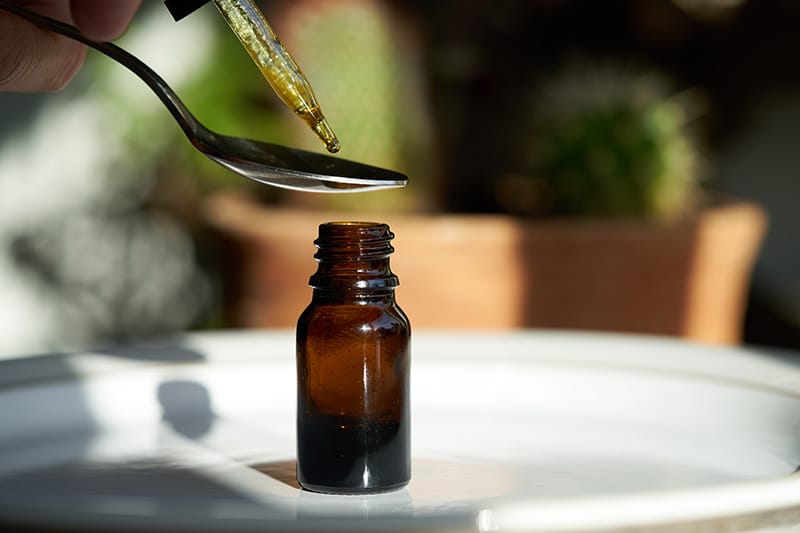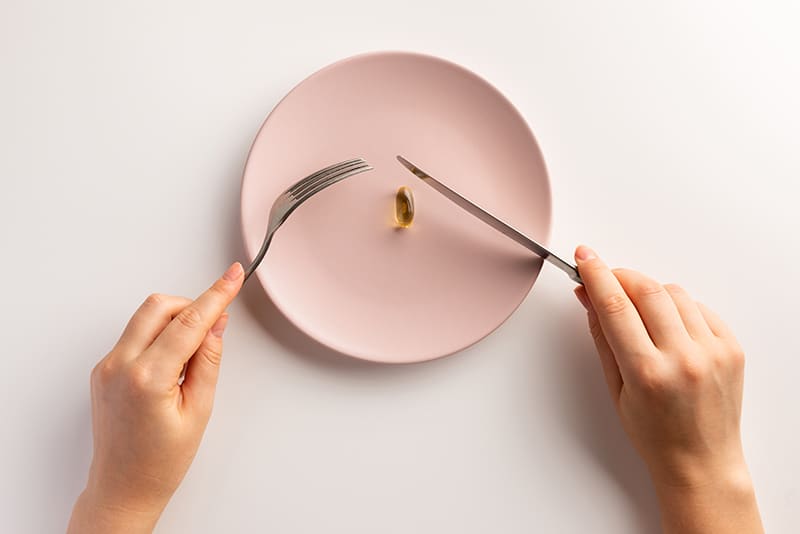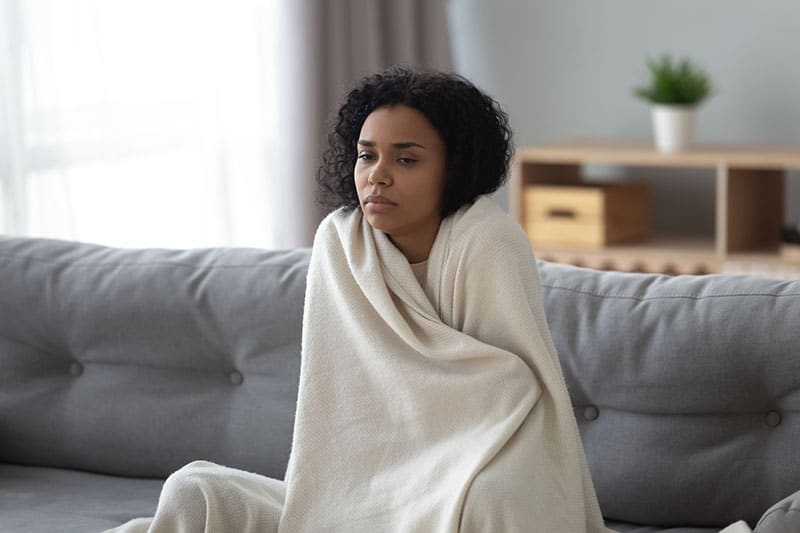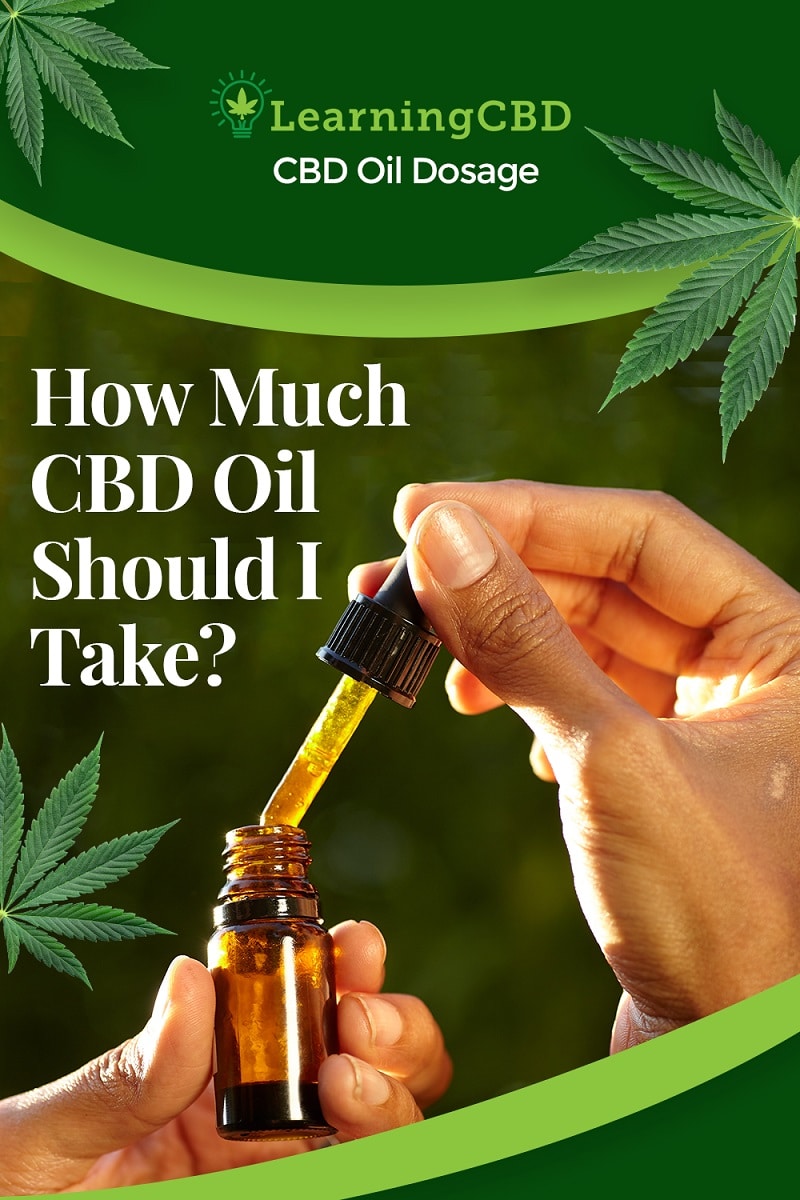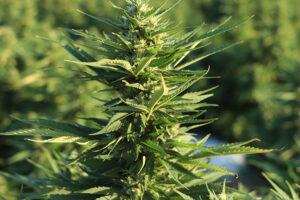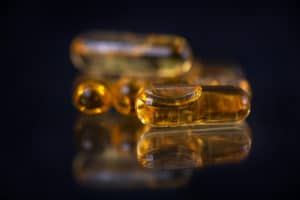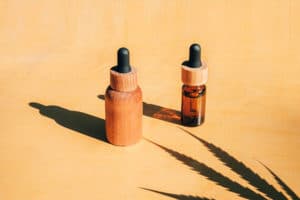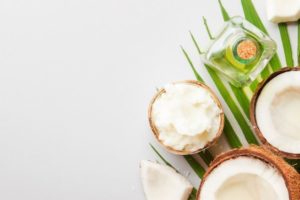If you’re using cannabidiol (CBD) to treat a medical condition such as anxiety, inflammation, insomnia, or chronic pain, it might not be clear how much CBD oil you should take to help relieve your symptoms. CBD, one of many cannabinoids derived from hemp and its cousin marijuana, has seen a massive surge in popularity since the Hemp Farming Act of 2018 removed the legal hurdles holding it back.
As a result, you can now find everything from CBD candy to capsules and everything in between—but how much CBD can you consume safely? The right dosage for you depends on several factors:
- Your body weight
- Your physiology
- The condition you’re treating
- The CBD concentration of the product you’re using
Let’s have a look at the medical aspects of CBD dosage, brand dosage recommendations, biomedical, and other factors, as well as microdosing.
CBD Oil Dosage Safety
The US Food and Drug Administration (FDA) doesn’t regulate or provide dosage recommendations for CBD as it’s classified as a supplement. This leaves those without a prescribing doctor in the dark. If you’re not taking an adequate dose, you likely realize you may not achieve the intended results, but can you overdose on CBD oil? Is it addictive?
Can you overdose on CBD Oil?
According to the US National Library of Medicine, cannabidiol oil is safe in daily dosage amounts (by mouth) up to 300mg for up to six months. Daily doses from 1,200 to 1,500 mg are safe for up to four weeks. Keep in mind that these time frames are just based on how long actual studies have been done on the subject. There is nothing thus far to suggest that using CBD beyond four to six months is harmful.
Higher doses (over 1,500mg) will likely make you very sleepy, but that’s typically the extent of CBD’s primary side effects. Some users may also experience:
- Dry mouth
- Low blood pressure
- Lightheadedness
In short, you can’t overdose on CBD.
Can you become addicted to CBD?
Research by the National Institute of Drug Abuse found that CBD is not an addictive substance like alcohol or opiates. They concluded there was no physical evidence of withdrawal symptoms for CBD users.
However, this did not hold true for heavy marijuana users, who can become behaviorally addicted to the high produced by THC. Hemp-derived CBD, even the full-spectrum variety, does not contain enough THC to produce a euphoric effect, but behavioral addiction may be a concern if you are opting for marijuana-based CBD.
Consult a Doctor for Optimal CBD Dosage
While CBD use has no serious side effects, doesn’t pose an overdose risk, and isn’t addictive, it can interact with certain medications, potentially reducing their effectiveness or duration of effectiveness.
Some individuals may also require special precautions. For instance, insufficient testing has been done to establish the safety of CBD use in pregnant and nursing mothers as well as children under the age of 2. Those with liver disease may also have to stick to lower doses to prevent complicating their condition. Given this, even if you aren’t taking other medications, it’s best to discuss taking CBD with your care provider before beginning use.
Likewise, if you are already being treated for the condition that you aim to take CBD for, your care provider should be made aware of your intent to try cannabidiol. They may also be able to suggest the best dosage to start with or suggest trusted brands.
Precautions When Using CBD with High THC Content
In most US states where CBD is legally available, the upper limit of THC allowed in commercially produced CBD products is 0.3 percent, according to the 2018 Farm Bill. So in most places, you don’t have to worry about consuming a higher concentration of THC in your full-spectrum CBD products purchased from legal sources.
However, in states where cannabis is legal, it’s possible to purchase CBD products with higher concentrations of THC. Some evidence suggests the entourage effect of combining CBD with THC improves its efficacy for pain relief. As with all supplementation, it’s best to start with a low dose, increasing it gradually until achieving the intended effect. Consult with your doctor or healthcare provider for medical advice.
Brand Dosage Recommendations for Their Own CBD Products
CBD products are available in various forms:
- Oil
- Tinctures
- Capsules
- Topicals
- Edibles
- Vape oils
The dosage you should consume varies by product format, concentration, individual body weight, desired effects, and tolerance. While there is no FDA recommended dosage for CBD, the factors noted are the basis of most dosage recommendations for CBD-infused products.
Lakeview Pharmacy recommends 10mg CBD oil or a 15 mg capsule taken once or twice daily for their CBD oil products.
The Greener Good has dosage recommendations based on the desired effect. Mild: 9-22.5 mg, medium: 12-30 mg, or high: 15-45mg.
CBD Oil Review cites Mayo Clinic dosage recommendations suggesting various daily dosage amounts, some with time limits.
Most manufacturers recommend starting with a low dose and increasing gradually to achieve the intended effects. Consult with a physician for medical advice or if you have any questions about using CBD products. See our dosage charts below for more information.
3 Factors That Determine Ideal CBD Dosage
As previously mentioned, several determinants apply when calculating your ideal CBD dosage. Personal makeup, the condition you’re treating, and the form in which you’re consuming CBD all influence how much you should take to achieve the intended effect.
1 – Everyone is a bit different.
Your genetic makeup, weight, age, and metabolism can all influence the recommended CBD dosage most effective for what you’re treating. Dosage amounts vary widely, with weight often being a primary determinant for calculating the correct dose, followed by the condition you’re managing. CBD’s interaction with your endocannabinoid system and its reciprocal effect on physiology can also influence your recommended dosage amount. Always begin by following the manufacturer’s recommendations for the CBD product you’re using.
2 – The condition you are treating affects dosage recommendations.
How much CBD you take might also depend on what you are treating. Some citations attributed to the Mayo Clinic suggest specific dosage amounts for particular conditions. Some examples include:
- Epilepsy: 200 to 300 mg daily
- Chronic pain: 2.5 to 20 mg daily
- Sleep disorders: 10 to 40 mg daily
The concentration of CBD in the product you’re taking will also influence your dose.
3 – Ingestion Method.
Your ingestion method, the area of the body targeted for relief, and how much time you have (or require) for relief from symptoms can all influence your CBD dosage amount as well.
If you have questions about CBD dosage for your specific condition, consult with your healthcare provider for medical advice. Here is a brief overview of the various ingestion methods.
Oral Ingestion: CBD oil, tinctures, edibles, and capsules pass through your digestive tract for absorption in the bloodstream. Typically, ingestion is a slower transmission method as a result, but it has the longest-lasting effect. It is best to consume CBD after eating to achieve the full effect.
Sublingual Ingestion: Tinctures and oil can also be taken under the tongue (sublingual), where absorption occurs through capillary transmission. This method takes effect a lot faster than oral ingestion, despite that part of the dose is swallowed.
Inhalation (Vaping): Inhalation using a vape device transmits CBD directly into the bloodstream via the lungs. It is the fastest CBD absorption method, but its efficacy has the shortest duration.
Topical Application: CBD-infused creams and lotions are absorbed directly through the skin to affected areas, such as muscles and nerve endings. Time to relief varies by the affected area of the body, dose amount, and CBD concentration.
Calculating the Correct CBD Dosage
Determining how much CBD to consume depends on factors noted earlier—body weight, the condition you’re trying to relieve, your metabolism, and the CBD concentration in the product you’re using. Before using CBD, consult with your doctor about dosage recommendations and any possible side effects or interactions with other drugs.
If you are unable to get a doctor’s recommendation, the best option is to start with a smaller dose and gradually increase the dosage until you achieve the desired result. Be sure to keep track of how much you are taking over time and note when you began to feel relief from the symptoms you’re treating.
For example, if taking 20 mg for chronic pain provides little or no relief, increase your dosage by 5 mg for a week and monitor your pain levels. If your pain becomes tolerable or is relieved entirely by a 25 mg dose, then maintain that dosage and adjust up or down as needed.
CBD Dosage When Taken Orally
Ingesting CBD orally is the easiest way to absorb CBD into your bloodstream. There are several formats available for consuming CBD orally:
- Oil
- Tincture
- Gummies
- Softgel capsules
Some dispensaries and other retailers also carry baked goods, candies, and lozenges containing CBD. Consuming products like gummies, sweets, or soft gels can make dosing easy since each serving contains a pre-measured dose using a specific concentration.
Liquids like CBD oil and tinctures require measuring out your dose with a dropper. The concentration of CBD in your oil or tincture will also determine the dosage amount per drop. CBD tinctures and oil can be added to food, as well. Be sure to consult the product instructions for dosage recommendations.
Once you’ve calculated the correct dose for your weight and intended result, you can take the corresponding amount using whichever solid or liquid CBD product you prefer. Please see the CBD dosage guide below for notes and details for converting fluid measures to weights (in mg), as well as dosage recommendations by weight.
CBD Dosage When Taken Sublingually
Typically, sublingual (under the tongue) application of CBD involves an oil or tincture. The amount you place under your tongue is similar to oral ingestion. CBD tinctures and oils usually come in 15 ml or 30 ml bottles. CBD concentration can vary from 25 to 1,500 mg per bottle (15 ml or 30 ml). A single 1 ml dose from a dropper will contain a different amount of CBD depending on the concentration of the product you selected.
Always read the instructions that accompany your CBD product for dosage information. Your weight and the intended effect are the other main factors in calculating your dose. The dosage charts below can help you determine how many drops of oil or tincture correspond to the amount you want in milligrams by CBD concentration, and how much to take for the intended effect.
CBD Dosage When Inhaling
Inhaling CBD by vaping, smoking concentrates, or high-CBD cannabis is the least precise way of measuring CBD intake. While a vape cartridge or refillable tank may have a specific capacity (e.g., 200 mg), there is no way to precisely measure the CBD contained in a single puff. Nor is there a way to know how many puffs are required to achieve the intended result.
Factors that influence the amount you take include weight, the area of the body or symptoms you’re targeting, and the bio-availability or amount of CBD absorbed by the body when vaping. Vaping has the highest bio-availability of all the absorption methods discussed. You can do the math and calculate how many puffs it takes to consume 50 mg (half) of a 100 mg cartridge, determining milligrams of CBD per puff, or count the number of puffs required to achieve the intended effect.
Note: reports as recently as December of lung distress due to vaping were caused by contaminated nicotine and cannabis vaping fluids. Make sure your CBD for vaping comes from a reputable source and contains no additives.
CBD Dosage When Used Topically
Similar to inhaling CBD, topical applications are challenging to calculate since the “dose” depends entirely on how much product you apply to your skin. Topical product CBD concentrations can range from 250 to 1,500 mg. Those with severe or chronic pain may prefer using higher concentration products.
It is equally challenging to recommend a topical CBD dosage since:
- People use CBD topically for many reasons and purposes
- Specific body types affect absorption rates
- Targeted areas and symptoms may require different amounts
Discuss topical CBD treatment with your healthcare provider for safe usage and dosage guidelines. Also, be sure to use topical CBD products as directed. Most topical formulations are not intended for oral consumption (including massage oils).
CBD Dosage Charts
Use the charts below for information on CBD dosage amounts by weight and serving strength.
CBD Oil and Tincture Conversion Chart
Use this chart to calculate the number of drops of CBD oil or tincture needed for the intended dosage.
Mg of CBD per Bottle (concentration) | Mg CBD per drop | |
| 15 ml bottle | 30ml bottle | |
| 25 mg | 0.08 mg | 0.04 mg |
| 50 mg | 0.17 mg | 0.08 mg |
| 100 mg | 0.33 mg | 0.17 mg |
| 150 mg | 0.50 mg | 0.25 mg |
| 250 mg | 0.83 mg | 0.42 mg |
| 350 mg | 1.17 mg | 0.58 mg |
| 450 mg | 1.50 mg | 0.75 mg |
| 500 mg | 1.67 mg | 0.83 mg |
| 550 mg | 1.83 mg | 0.92 mg |
| 750 mg | 2.50 mg | 1.25 mg |
| 1,000 mg | 3.33 mg | 1.67 mg |
| 1,500 mg | 5.00 mg | 2.50 mg |
Source: Diamond CBD.
CBD Dosing Chart by Weight and Desired Dose Size
Use the chart below to determine the optimal CBD dosage based upon your weight and the desired daily dose level (microdose, standard dose, or extra strength dose).
| Pounds | Microdose (mg/day) | Standard Dose (mg/day) | Extra Strength Dose (mg/day) |
| 50 | 0.5 – 5 | 7.5 – 25 | 37.5 – 250 |
| 60 | 0.6 – 6 | 9.0 – 30 | 45 – 300 |
| 70 | 0.7 – 7 | 10.5 – 35 | 52.5 – 350 |
| 80 | 0.8 – 8 | 12.0 – 40 | 60 – 400 |
| 90 | 0.9 – 9 | 13.5 – 45 | 67.5 – 450 |
| 100 | 1.0 – 10 | 15.0 – 50 | 75 – 500 |
| 110 | 1.1 – 11 | 16.5 – 55 | 82.5 – 550 |
| 120 | 1.2 – 12 | 18.0 – 60 | 90 – 600 |
| 130 | 1.3 – 13 | 19.5 – 65 | 97.5 – 650 |
| 140 | 1.4 – 14 | 21 – 40 | 105 – 700 |
| 150 | 1.5 – 15 | 22.5 – 75 | 105 – 700 |
| 160 | 1.6 – 16 | 24 – 80 | 112.5 – 750 |
| 170 | 1.7 – 17 | 25.5 – 85 | 120 – 800 |
| 180 | 1.8 – 18 | 27 – 90 | 127.5 – 850 |
| 190 | 1.9 – 19 | 28.5 – 95 | 135 – 900 |
| 200 | 2.0 – 20 | 30 – 100 | 150 – 1,000 |
| 220 | 2.2 – 22 | 33 – 110 | 165 – 1,100 |
| 240 | 2.4 – 24 | 36 – 120 | 180 – 1,200 |
Source: Healthy Crush.
Find your CBD dosage in three simple steps
Step 1: Determine the potency of the CBD oil
How strong or effective is your CBD oil? In some cases, the manufacturer will provide details on the CBD concentration per ml of the oil. However, this is not always the case, so you may need to do some calculations to determine its potency for yourself.
All you need to do is divide the CBD volume amount in milligrams by the bottle’s size in milliliters.
[CBD volume in mg] ÷ [CBD bottle size in ml] = CBD Oil Potency ml/mg
Here’s an example
Full Spectrum CBD Oil from Ananda Hemp is advertised to have 2,000 mg of active cannabinoids in a 30 ml bottle.
Using our formula:
[2,000 mg] ÷ [30 ml] = 66.7 CBD mg/ml. Every 1 ml of this CBD oil contains a dose of approximately 66.7 mg of active cannabinoids. Very potent!
Step 2: Calculate the ideal dosage
Simply refer to the CBD Dosing Chart above to determine your optimal CBD dosage based on your weight and preferred dose size. Remember, this is just a guideline. If you have an underlying issue that requires you to take other medication, talk to your doctor to make sure taking CBD won’t be an issue.
Step 3: Tweak the dosage as needed
Everyone responds to CBD differently—it’s important to know how it affects you personally. You know your body best. After calculating your ideal dosage, use that value as a starting point. Assess the experience and increase or reduce the dose as needed. Let’s say you initially took 16 mg but were unable to find relief. Up the dose and assess it again.
Keep in mind that with constant use, your tolerance will increase. Unfortunately, that means that you’ll have to reassess how the CBD affects you and adjust accordingly over time. Lastly, your experience might differ if you used the same amount of CBD oil from another brand. Each manufacturer has its own extraction process, and there may be variations in the terpenes and cannabinoids in the oil.
CBD oil dosages for different illness
If you’re taking CBD oil to manage a specific condition, you’ll want to adjust your dosage accordingly. Here’s a quick breakdown of recommended dosages for different medical conditions:
CBD oil dosage for anxiety
CBD is often hailed as an anxiety-reducing agent, but how much should you take? The recommended dosage ranges 40-80 mg every day, depending on your body weight and metabolism. If not effective in that range, you could increase the dose in 10mg increments or top up as needed with another CBD product.
CBD oil dosage for liver function
Although there are reports suggesting that CBD can improve liver function, there are also reservations about its actual efficacy. With that in mind, it’s best to first talk to a health professional if you want to use CBD oil to manage liver disease. On average, however, the dosage ranges from 600-1,200 mg every day.
CBD oil dosage for seizure
There is no standard CBD oil dosage for seizures, so it’s important to talk to your doctor before administering it. The actual dosage will depend on a number of factors, including your weight, and if you are taking other seizure medications.
CBD oil dosage for pain
There is no current recommended dosage on CBD oil for managing pain since we all feel pain differently. This aspect makes it impossible to define pain level and the right amount to administer to manage it. If you’re using CBD oil for pain, the current recommendation is to take your ideal dose two to three times a day and tweak as needed.
CBD oil dosage for sleep
The suggested starting dosage to promote better sleep ranges from 40-160 mg every day. Assess your experience and adjust accordingly.
CBD oil dosage for pets
Many factors play a role when calculating the right CBD oil dosage for your furry friend(s). For one, some animals have fewer receptors than others, so always err on the side of caution. Start with low doses and monitor the results.
Consider your pet’s weight too. The general recommendation is to administer 0.2 mg/pound. Let’s say your pet weighs 30 pounds. You can administer 6 mg of CBD.
Then, you need to calculate how much oil you should use based on how many milligrams (mg) of CBD is in each milliliter (ml) of oil. This will depend on the formula strength you’re using (as discussed above).
Microdosing CBD Oil
Microdosing is a growing trend among CBD users for boosting athletic performance, enabling CBD consumers to reap the maximum benefit throughout their day, and for using full-spectrum CBD derived from cannabis to minimize the amount of THC consumed.
What is Microdosing?
Microdosing is breaking up your daily CBD dose into smaller doses taken incrementally throughout the day. It allows you to enjoy the health benefits of CBD and to customize your daily dosage for your needs, lifestyle, and the condition you’re treating.
Why Microdose CBD Oil?
The intention is to help you reap the most wellness benefit from your CBD by maintaining a consistent level in your bloodstream throughout the day. It also allows those using cannabis-derived CBD to enjoy its effects without intoxication.
How to Microdose CBD Oil
You can microdose using any number of widely available edible CBD products.
- Gummies, candies, or tablets–sold in a set dosage–can be taken at various times throughout the day.
- Softgel capsules–also sold in predefined doses–are consumed at regular intervals during the day.
- Oil and tinctures can be measured out easily for microdosing using a dropper (see dosing and conversion charts above), enabling you to make fine adjustments in their dosage levels.
Other factors, such as time, convenience, and discretion, may influence your choice of edible format. There may be times or occasions when using oil or tincture is not appropriate, but gummy works just fine. You can also opt for multiple delivery methods. For example, you may use a tincture at home and a capsule at work.
If using a small amount throughout the day and staying within limits recommended for your weight and treatment level, any risks are minimal. However, consult with your health care provider if you have any questions about microdosing or using CBD.
Mixing CBD Products
With the wealth of CBD products on the market, it’s hard to choose just one. More importantly, it makes you wonder if it’s worth it to combine them—and is it safe to do so?
In a 2018 report, The World Health Organization (WHO) confirmed that CBD poses no public health risk and no abuse potential. Research is still ongoing, but so far, there isn’t any evidence to the contrary. Of course, this doesn’t mean it’s ok to go overboard with CBD products.
Are there benefits?
You might notice that it is more effective to target different issues with different CBD products as opposed to sticking to one product and using it in isolation. For instance, you could consume CBD gummies to help you sleep better and apply a CBD topical to manage localized pain. This approach may provide relief for multiple symptoms in one go. The important thing to remember is to start small and stay within the recommended dose for each product.
Why doesn’t it affect me?
CBD oil boasts quite a few potential health benefits, and the number of people trying it grows year after year. However—we can’t stress this enough—CBD affects people differently. As such, some people tend to feel like they’ve been duped when they don’t experience the effects they expected.
If you recently tried using a CBD product, and to your dismay, you couldn’t find symptom relief, it may be due to one of the following reasons:
- You didn’t take the right dose – There is strong scientific evidence backing CBD oil’s effectiveness. If it’s not working for you, it’s likely because the dosing is incorrect. Now that you know how to calculate the ideal dose consider giving it another try and reassessing your experience.
- You didn’t give it enough time to act – How quickly people experience CBD’s effects tends to vary for several reasons. These include your method of consumption and the type of CBD product. For instance, CBD oil in edibles can take anything from 30 minutes to four hours before you notice its effects.
- The product is low quality – With no standard regulation on CBD, just about anyone can sell CBD products with no quality guarantee. Before buying your next CBD product, make sure it’s from a reputable, well-established seller.
- You were expecting a buzz – Because of its close association with marijuana and THC, you may be expecting CBD oil to give you a high or buzz. CBD doesn’t contain high levels of THC—if any—
which is the cannabinoid that causes that buzzed, “high” feeling. Instead, CBD offers a mellow, relaxing vibe and takes away tension and feelings of anxiety.
In Conclusion
Determining how much CBD you should take is not a straightforward question to answer. CBD is a non-addictive, non-intoxicating substance praised for its health and wellness benefits. The recent legal status of hemp has resulted in an explosion of CBD products on the market in a lot of forms—edibles, topicals, oils, tinctures, and capsules. With such a vast proliferation of cannabidiol products out there, it can be hard to pinpoint the correct dosage amount.
Each product should come with dosage recommendations, which should be your first point of reference. However, depending on the format of your CBD product, how you ingest it, your weight, and the area of the body or condition you’re treating, your dose amount may vary.
No single answer or formula can tell you how much CBD to take. However, options like microdosing allow you to start small and ramp up your dosage amounts incrementally. Also, practitioners believe microdosing provides the wellness and benefits of CBD usage more evenly throughout the day than a single daily dose.
As with any dietary or wellness product not regulated by the FDA, it’s best to consult with your healthcare provider to ensure there are no known side effects or other drug interactions in your case that would result in an adverse reaction from using CBD products.
Your health and wellness are your number one priorities. Use CBD with caution until you have established a dose that relieves the medical condition you’re seeking to address.
FAQs About How Much CBD Oil You Should Take
Question: How Much CBD Oil Should I Take?
Answer: The right dosage for you depends on several factors such as your weight, physiology, condition you’re treating, and CBD concentration.
Question: How to find your CBD Dosage?
Answer: In summary, first you need to determine the potency of CBD oil. Then calculate the ideal dosage using a CBD dosing chart. Lastly, tweak the dosage as needed
Question: Can you overdose on CBD oil?
Answer: According to the US National Library of Medicine, cannabidiol oil is safe in daily dosage amounts (by mouth) up to 300mg for up to six months.
Question: Can you become addicted to CBD?
Answer: Research by the National Institute of Drug Abuse found that CBD is not an addictive substance like alcohol or opiates. They concluded there was no physical evidence of withdrawal symptoms for CBD users.
Question: Should you consult a doctor in taking CBD dosage?
Answer: While CBD use has no serious side effects, doesn’t pose an overdose risk, and isn’t addictive, it can interact with certain medications. Your health care provider can give you the optimal dosage for CBD oil.
Question: What are the factors to determine the ideal CBD dosage?
Answer: Ingestion method, the conditions you are treating, and your physical body are the common factors to determine your ideal CBD dosage.
Question: What are the ways to take CBD orally?
Answer: You can consume CBD orally by oil, tinctures, gummies, or soft gel capsules.
Question: Ways to microdose CBD oil?
Answer: You microdose CBD oil by intaking CBD gummies, soft gel capsules, or tinctures. These type of CBD products are easy to microdose since you can intake an exact or very similar amount.
Question: What is the correct CBD dosage for pets?
Answer: Many factors play a role when calculating the right CBD oil dosage for your pets. These include the weight and the receptors your pets have. It is better to start with a low dose and monitor the results. As for weight, the general recommendation is to administer 0.2mg/pound
